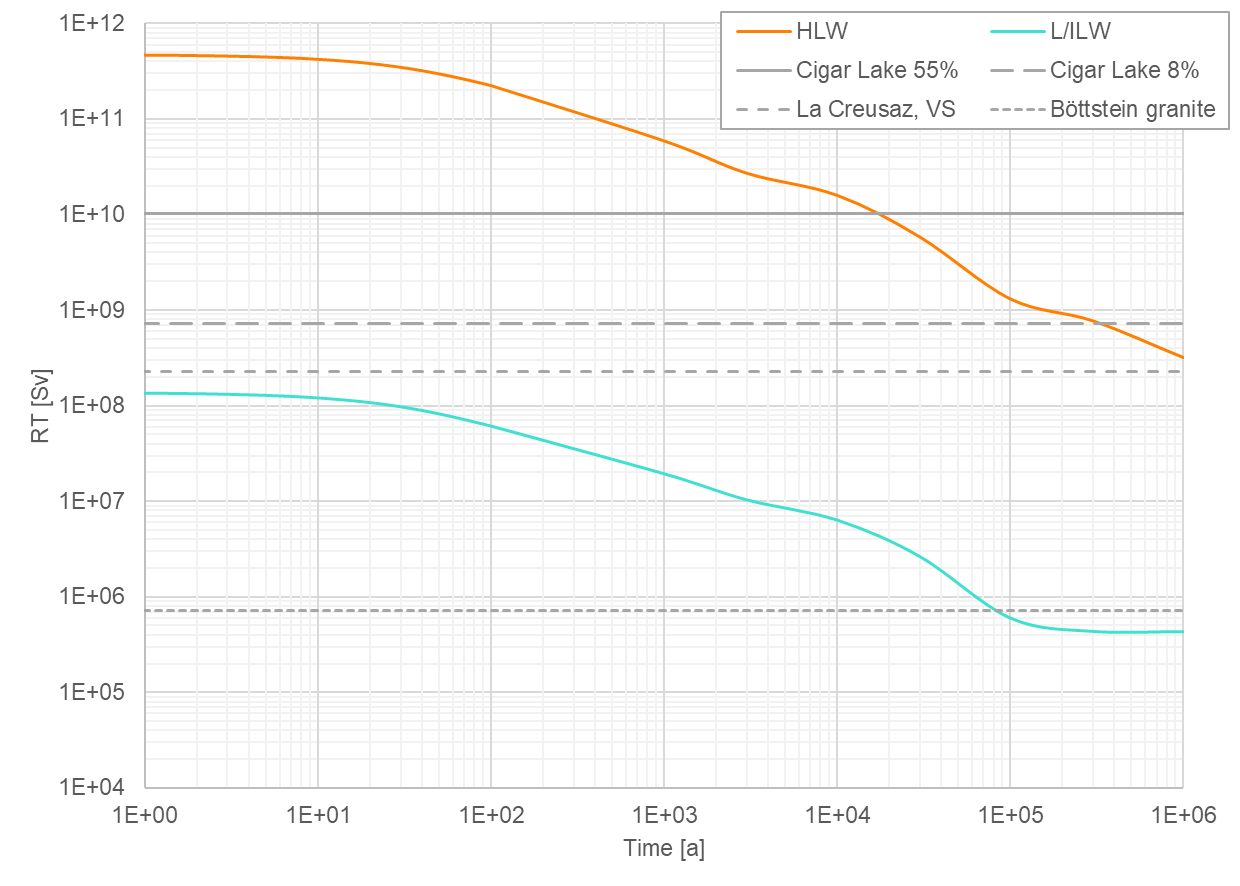The evolution of the RT of the HLW and L/ILW disposed of in the repository is shown in Fig. 9‑3, illustrating the declining radiological hazards from the waste packages with time.

Fig. 9‑3:Evolution of the radiotoxicity (RT) of the HLW and L/ILW disposed of in the repository
The horizontal reference lines correspond to the radiotoxicity of similar volumes of rocks and ores. Note that the uranium ore lines assume the approximate volume of the HLW repository section (100,000 m3), while the granite assumes the approximate volume of the L/ILW repository section (200,000 m3) (Nagra 2024a).
Fig. 9‑3 also compares the RT of HLW and L/ILW disposed of in the repository as a function of time compared with the RTs of:
-
Böttstein granite, a well-characterised, typical granite of Northern Switzerland,
-
uranium ore from the Cigar Lake deposit in northern Saskatchewan, Canada, with two different uranium concentrations, and
-
rock from La Creusaz, a small uranium deposit in canton Valais, Switzerland,
assuming a volume of these materials roughly equal to the volumes of the emplacement drifts and caverns (see figure caption for details). The estimation of the RT of ores from Cigar Lake and La Creusaz is described in Appendix A.1 NAB 24-05 (Nagra 2024a). The estimation of the RT of Böttstein granite is described in Appendix A.2 of the same report.
After 100,000 years, the RT of the HLW has reached a level similar to that of low grade (8%) uranium ore from Cigar Lake, and, after 1 Ma, the RT is a little higher than that of the uranium-bearing rocks from La Creusaz.
The RT of L/ILW follows a similar trend to that of HLW, but with significantly lower RT values (roughly three orders of magnitude). At the time of emplacement in a deep geological repository, the radiotoxicity of the L/ILW is below that of both uranium ore from Cigar Lake and rock from the La Creusaz uranium prospect. After 100,000 years, L/ILW has a lower RT than Böttstein granite.

